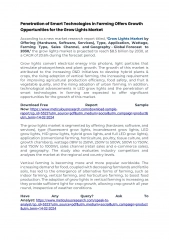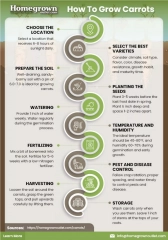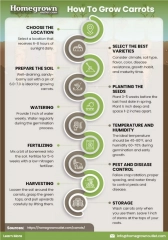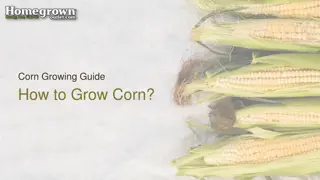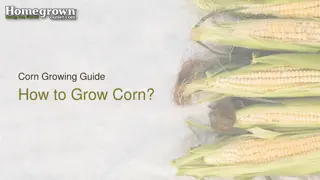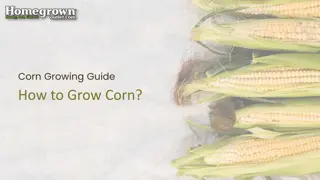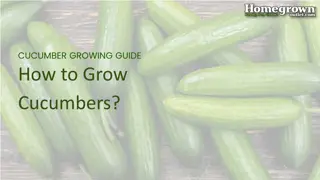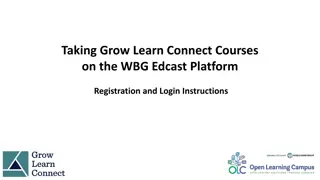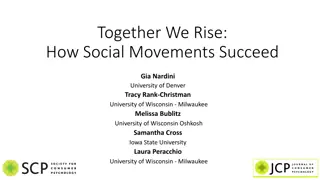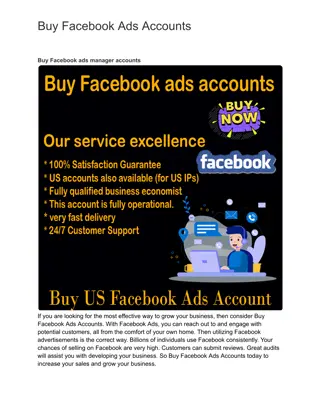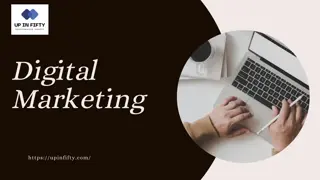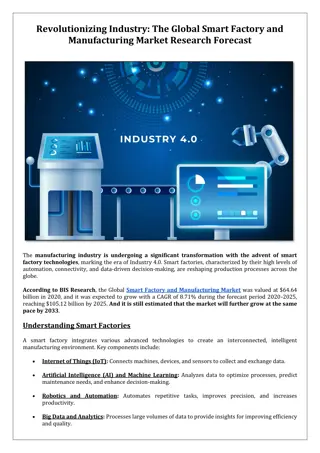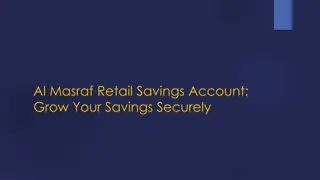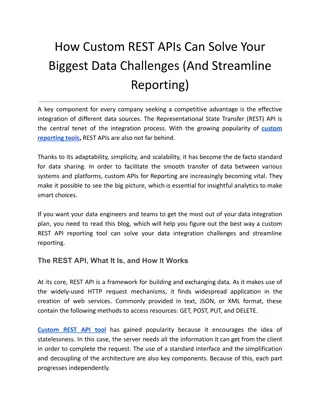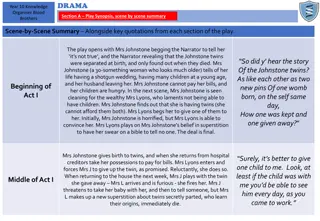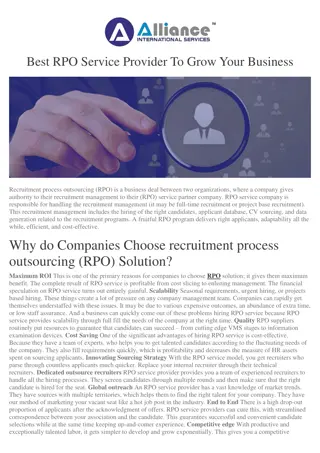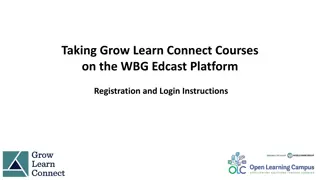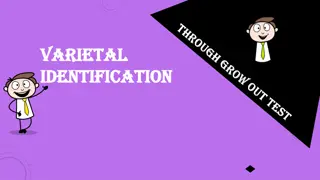
Discovering Your Career Path Through Mathematics
Explore a project scenario that helps you uncover your career aspirations by analyzing the intersection of your interests with mathematics. Join a team to create a marketing plan for STEM careers at a job fair.
Download Presentation

Please find below an Image/Link to download the presentation.
The content on the website is provided AS IS for your information and personal use only. It may not be sold, licensed, or shared on other websites without obtaining consent from the author. If you encounter any issues during the download, it is possible that the publisher has removed the file from their server.
You are allowed to download the files provided on this website for personal or commercial use, subject to the condition that they are used lawfully. All files are the property of their respective owners.
The content on the website is provided AS IS for your information and personal use only. It may not be sold, licensed, or shared on other websites without obtaining consent from the author.
E N D
Presentation Transcript
? ? What do I want to be when I grow up? Project Entry Event The Driving Question The Driving Question Project Entry Event The Project Scenario Project Steps The Project Scenario Project Steps Unit Goals Overview The Final Product Unit Goals & Overview The Final Product Resources Project Timeline Project Timeline Resources
What do I want to do when I grow up? Entry Event The first part of the entry event is for you to watch the following videos. As you do, reflect on the content and message of each and how it might affect you. Write down the key points that speak to you for each one: https://www.youtube.com/watch?v=HtBll53jMcM https://www.youtube.com/watch?v=vVsXO9brK7M You will next build your Career Planning portfolio as part of the https://www.cfnc.org/index.jsp website (create an account if you do not already have one). As you do, you will learn more about yourself and find careers that are suited for who you are and what you love:
What do I want to do when I grow up? Entry Event The third step is for you to meet with your PBL team and share what you found and learned in the first two steps. As you do, relate the outcome to the following graphic*: http://1drv.ms/1PjJ3Iu *Note that you may, but are not required to complete the ACT assessment for this tool. Simply use it as a way to identify what you learned from the first two steps. The final step of the entry event is to use the following videos as a basis to relate the findings of this entry event - i.e. your career choice(s) to the mathematical goals of this project and then document these impressions with your PBL team. https://www.youtube.com/watch?v=d2hpkI9kSlI https://www.youtube.com/watch?v=VwCLitK69PU https://www.youtube.com/watch?v=gDkd0Vaxf-c Return to MAIN Return to MAIN
What do I want to do when I grow up? Project Scenario You and your team have spent a lot of time in the entry event defining what you love to do, how that love relates to potential career choices, and how those career choices are affected by mathematics directly or indirectly. This project will use these findings as a starting point for you and your team to dig deeper into the math connections so that you can see how those real-world connections will help enable you to ultimately have the career you want to have in life.
What do I want to do when I grow up? Project Scenario The project s scenario is that you and your team will act as a recruiting company for the type of jobs your team members will want to do and will develop a marketing plan to highlight the benefits of these jobs to prospective high school and college graduates. Your marketing plan is being presented at a job fair at a school with a strong Science Technology Engineering & Mathematics (STEM) focus sound familiar? - and as such, will specifically highlight connections between STEM especially math - and the careers you are emphasizing. Return to MAIN Return to MAIN
What do I want to do when I grow up? Driving Question How does math relate to what I want to do in life? ? Return to MAIN Return to MAIN ?
What do I want to do when I grow up? Final Product The first part of your final product is developing a name, logo, format, and platform for your recruiting company. You will then need to do more in-depth research for mathematical connections to each team member s goal career. Your marketing plan must ultimately be produced in a way that highlights your team s creativity and depth of knowledge of the mathematics connections to each career. The plan must also specifically reference your answer to the project s driving question and provide enough compelling examples to convince any potential recruit of the benefits of the career and how it relates to the math knowledge you have acquired to this point in your academic career.
What do I want to do when I grow up? Final Product Because your marketing team has been hand-picked by your company to develop and present the plan to your potential new employees, you and your teammates will need to verify that you are subject matter experts in each of the careers in which your plan will focus. This ensures that you can correctly answer any question a potential recruits may have! While at the career fair, your team s marketing plan booth must be attended by at least two of your company s sales representatives at all times. At least one other member of your sales team must be trolling the career fair, gathering information about other careers (these roles must be rotated throughout the time of the career fair). The presentation should begin with a brief introduction (1-2 minutes to introduce your group members and a statement that answers the driving question) followed by the presentation of your final product.
What do I want to do when I grow up? Final Product While at the career fair, your team s marketing plan display must be attended by at least two of your company s sales representatives at all times. At least one other member of your sales team must be trolling the career fair, gathering intelligence and looking for trade secrets from his/her competition (these roles must be rotated throughout the time of the career fair). The presentation should begin with a brief introduction (1-2 minutes to introduce your group members and a statement that answers the driving question) followed by the presentation of your multi-media product and a company flyer, etc. IMPORTANT! There will be members of the local community present during the Career Fair!
What do I want to do when I grow up? Final Product Other final product requirements: Your marketing plan may consist of videos, mini-presentations, flyers, props, etc., but must at least include at least one professional looking display that provides an overview that is compelling to potential recruits. All team members must develop business cards to hand out to prospective recruits and other interested parties. Everyone in the group should dress and act professionally during the entire career fair. All team members must participate equally in the presentation (at their displays and trolling). As group members troll the other displays, they will be asked to assess the thoroughness of each of their peer displays. The results of this peer assessment will be used to identify at teams that will earn high mastery on the project. Return to MAIN Return to MAIN
What do I want to do when I grow up? Project Goals Unlike most of the projects you will do as part of this Math 2 course, this project is somewhat open-ended in terms of its scope i.e. you will ultimately define the connections of mathematics that will be the focus of your team s work. You and your team, using the entry event as a basis, as well as you own experiences in 8th & 9th grade and the results of your summer assignment, will determine what topic areas you will address with your product offerings. Note that you are expected to identify at least 10 non-arithmetic connections (probability, statistics, algebra, or geometry) for each career you address in your PBL team. The next page has a listing of example topics. Note that the more connections you include and can thoroughly describe and defend in your final product, the greater your team s chance at mastery or high mastery for this this project especially if these address common algebra pitfalls you have had difficulty with in the past. Return to MAIN Return to MAIN
What do I want to do when I grow up? Project Goals (Continued): The following are essential math topics and on-line resources primarily from algebra and geometry that not only have broad connections to the real-world, but are also things many students struggle with. These are examples of the types of specific topics you and your teammates should work to include in your final product as they will be expected to be mastered by the time we launch the second project in the course: Adding, subtracting, multiplying, & dividing algebraic Fractions Basic factoring Rules of exponents Number sense (rational, irrational, whole, integer, real, etc.) Linear functions Properties of algebra (additive, multiplicative, distributive, communitive, etc.) Operations with square roots Squaring binomials Solving & simplifying algebraic expressions http://www.educationworld.com/a_curr/ mathchat/mathchat019.shtml http://classroom.synonym.com/real- world-examples-use-math-daily-basis- 8467.html https://www.youtube.com/watch?v=jRMV jHjYB6w http://mathmistakes.info/mistakes/algeb ra/ http://tutorial.math.lamar.edu/Extras/Co mmonErrors/AlgebraErrors.aspx https://www.youtube.com/watch?v=crmv Vm6Zm7c
Final Product Rubric Criterion: High Mastery Mastery In Progress How well does your final product demonstrate a quality answer to the project s driving question? The career connections your team demonstrates are creative, thorough, and accurate per the driving question and the final product is done in an innovative manner that exceeds the final product specifications. The career connections your team demonstrates are thorough and accurate per the driving question and the final product is done in a manner that meets all minimum final product specifications. The career connections your team demonstrates are not valid per the driving question and/or the final product is done in a manner that does not meet all final product specifications. How well does each team member participate in presentation of your final product? All team members can, with high confidence and precision, thoroughly and accurately describe the mathematics behind each of the examples it is presenting, including correct reference to applicable back-up documents. All team members can correctly and reasonably describe the mathematics behind each of the examples it is presenting, including accurate reference to applicable back-up documents. One or more team members are unable to correctly describe the mathematics behind the examples it is presenting or can not appropriately reference applicable back-up documents. How well does your product and supporting work convey a clear understanding of essential topics essential as a foundation to this Math 2 course? The presentation and supporting documents provide undisputable and quantitative proof that support your team s high mastery and transfer of knowledge of the topics essential as a foundation to this course. The presentation and supporting dossier provides good proof (i.e. correct mathematical expressions, descriptions, graphs, and data) that support your team s mastery and transfer of knowledge of the topics essential as a foundation to this course. The presentation and supporting dossier provides insufficient proof to indicate your team s mastery and/or transfer of knowledge of the topics essential as a foundation to this course. Note that your team may also be assessed opposite the PBL Product Presentation Rubric (found in the PBL Documents folder).
What do I want to do when I grow up? Project Extension In addition to what is described on the rubric, your team (or individuals on your team) may choose to extend the project beyond the minimum standards presented in this document with one or more of the following examples: Finding very creative examples that match way more math topics to your career goals than the minimum required. Displaying an obvious depth of research and analysis, rigorous mastery of the pre- requisite math topics expected in this course, and a highly informative presentation that impresses the audience. Providing accurate and well-defended examples (defended by ALL team members) that thoroughly meet the specific requirements of this project at least a week before the final project due date. Making interesting and mathematically accurate connections between what is done with this unit and learning targets from prior math courses or from other classes. The project team being identified by their peers and other judges as one of the top three presentations.
What do I want to do when I grow up? Unit Overview: This initial unit of study provides a brief, but thorough review of the essentials of mathematics from prior course work. This is done in a way that allows you to make real-world connections of various topics from these courses to your own career choice(s), thus giving you a strong foundation on these essential topics before we dive into this more advanced Mathematics 2 course. The unit will be done with students working in PBL teams, as specified by this master PBL document. Each team will follow the PBL process and is ultimately responsible for producing a final product that ensures mastery of the specific goals for this unit, as described in this document.
What do I want to do when I grow up? Big Idea: Mathematics, often called the language of the universe, is one of the most powerful tools developed by mankind. It is also a gatekeeper subject in today s global economy, in the sense that those who really know math (even if they may not love math), are in a much higher demand than those who do not. But like any language, it has a series of specific rules and fundamentals that have to be followed in order for it to be used correctly you can almost consider this the grammar of math. But unlike regular grammar, where an error may not be a big deal, mathematical grammar errors can cause major problems and confusion especially in more advanced topics and courses. As such, mastery of the basics of this language is essential for anyone wishing to attend college or wishing to enter the knowledge-based workforce. Return to MAIN Return to MAIN
What do I want to do when I grow up? PBL Steps & Resources The project steps for this and all PBL projects for this class are found in the Generic PBL Guidelines Math 2 document on the Google Classroom site for this class: https://classroom.google.com/c/MjI2MzI0OTZa Overview of the PBL Steps: Team Formation & Entry Event Develop a Project Story-Board & Contract (including team roles) Develop an evergreen Know-Need to Know Log Develop the Project Timeline for yourself & your PBL team Work on the Project to develop the PBL product! Type I & Type II Scaffolding Workshops, tutorials, Show & Explains, etc. Keep your journals, KNTK ,& Timeline current Finalize Your Product & Do a Mock Presentation Verify everything is ready for the Final Presentation and that your Unit Portfolio is complete. Return to MAIN Return to MAIN
What do I want to do when I grow up? PBL Steps & Resources PBL Rubrics: All rubrics and other PBL documents needed for this project are found on the Google Classroom website (Main Page): https://classroom.google.com/c/MjI2MzI0OTZa Scaffolding Activities: Activities you and your team will need in order to master the goals for this project are found under the Type I and Type II folders in the Google Classroom website for Unit 6. Tutorials: An extensive set of tutorials for the topics addressed in this unit is found on the Google Classroom website for this unit. Return to MAIN Return to MAIN
What do I want to do when I grow up? PBL Timeline Milestone Unit 1 PBL Kickoff Item: August 13th Milestone Check #1 All PBL Documents Due Deadline for all Type I Scaffolding August 19th Milestone Check #2 August 26th Milestone Check #3 Draft Products Due Mock Presentations September 2nd PBL Product / Presentation Due Date Friday, September 4th *Note that dates are subject to change - refer to the Google Calendar for this course for exact milestones and due dates. ? Return to MAIN Return to MAIN ?

